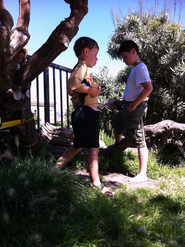autism characteristics
An abbreviated slide show taken from the PowerPoint of the webinar is included at the bottom of this page along with a download of the PowerPoint.
Language Characteristics
People with Autism Spectrum Disorder, to varying degrees, may experience physical and processing issues that make it difficult for them to form sounds and words, comprehend spoken language, or communicate their thoughts. Assistive Technologies including manual sign language, Picture Exchange Communication Systems (cards or items exchanged to communicate thoughts/desires/preferences) , Voice Output Systems, Object Boards, and iPad Applications. These devices help people with ASD and their supporters communicate, reducing frustration and acting out and providing incentives for learning - a principle of Universal Design for Learning.
Social CharacteristicsSeveral social characteristics are associated with ASD, an individual with that diagnosis may display some or all of these symptoms to varying degrees: limited or no interest in interacting with people, limited use of non-verbal behaviors (pointing, eye contact, facial or other expressions), limited or no interest sharing (asking or signaling for others to share a line of sight, treat, or experience), little or no imaginative or socially imitative play, little or no sign of attachment to people.
A person with any of these traits, even when high-functioning and main-streamed can find difficulty in many everyday situations. The resources link includes information about strategies to overcome some of these obstacles through scripting, role-playing, a token system, and social stories, some of which are available in apps for tablet devices, computer programs, books, or training in the technique. |
ConclusionsUnderstanding of the Communication characteristics associated with ASD allows curriculum and communication designers to consider accessibility of content for parents and children, utilize UDL principles to improve overall design, and evaluate assistive technologies.
|

